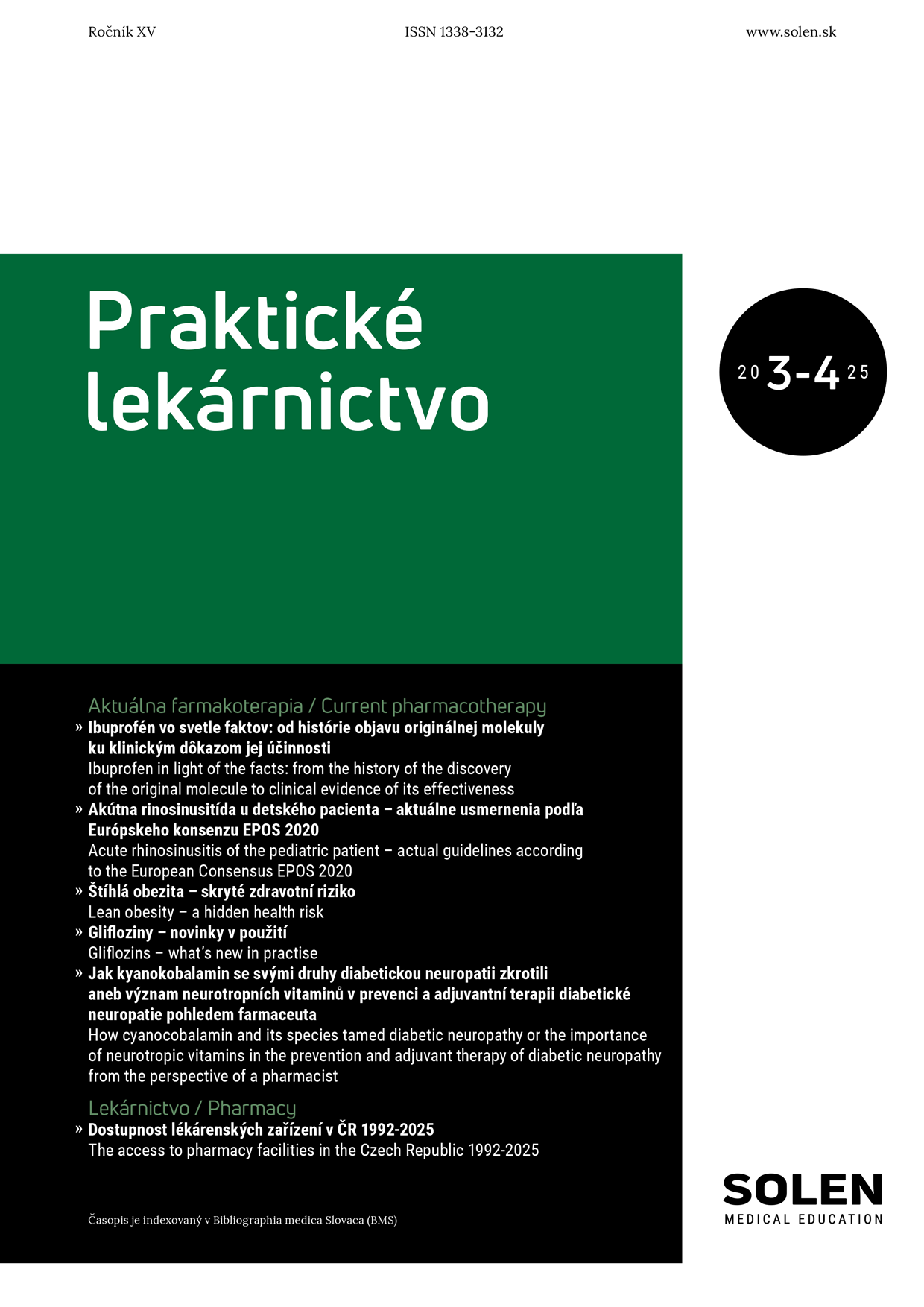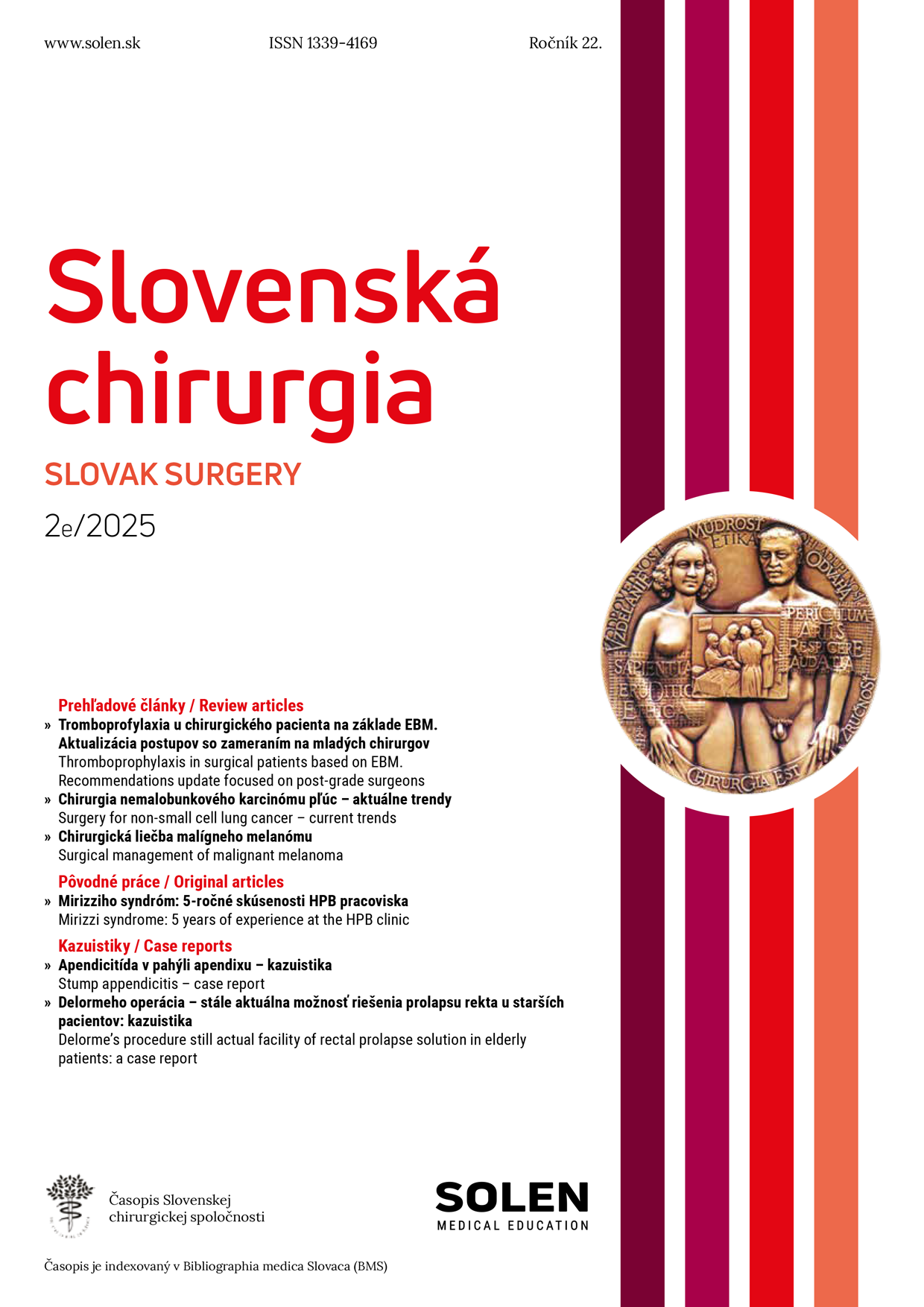Onkológia 5/2020
Význam cirkulujúcej nádorovej DNA u pacientov s nemalobunkovým karcinómom pľúc s mutáciami receptora pre epidermálny rastový faktor
MUDr. Michal Urda, MUDr. Simona Laštíková, MUDr. Juraj Mazal, prof. MUDr. Eva Rozborilová, CSc.
Tyrozínkinázové inhibítory (TKI) sú štandardom liečby adenokarcinómu pľúc s potvrdenými aktivujúcimi mutáciami génu pre receptor epidermálneho rastového faktora (EGFR). Detekcia genetických alterácií DNA stojí na molekulárno-genetických vyšetreniach nádorových buniek, prípadne cirkulujúcej nádorovej DNA (ctDNA). Najfrekventnejšie detegované liečebne ovplyvniteľné genetické alterácie sú aktivujúce mutácie génu receptora pre epidermálny rastový faktor (EGFR), z nich najčastejšia delécia na exóne 19 (del 19) je prognosticky najpriaznivejšia. Sekundárna mutácia T790M je hlavným mechanizmom získanej rezistencie pri liečbe prvo- a druhogeneračnými TKI. ctDNA predstavuje minimálne invazívnu možnosť detekcie EGFR mutácií v čase stanovenia diagnózy, ako aj v čase progresie ochorenia s reálnym využitím v klinickej praxi. Implementácia vysokosenzitívnych metodík ako digital droplet PCR (ddPCR) a Beads, Emulsification, Amplification and Magnetics (BEAMing) ešte zvýši jej klinický prínos. ctDNA monitoring EGFR mutácií počas liečby TKI umožňuje hodnotenie liečebnej odpovede, skorú detekciu zmien biológie nádoru, stanovovanie evolúcie rezistencie nádoru v reálnom čase. Perzistencia aktivujúcich EGFR mutácií v plazmatickej ctDNA je nezávislým prediktorom zlého prežívania bez progresie (PFS) a celkového prežívania (OS). ctDNA monitoring perspektívne umožní ešte selektívnejšiu optimalizáciu cielenej liečby, prípadne jej kombináciu s imunoterapiou a chemoterapiou.
Kľúčové slová: ctDNA, adenokarcinóm pľúc, EGFR, TKI, T790M, ddPCR, BEAMing
Circulating tumor DNA in non-small cell lung cancer patients with epidermal growth factor receptor mutations
TKIs are standard of care of lung adenocarcinoma with driver mutations. The detection of genetic alterations of DNA is based on molecular genetics analysis of tumor cells or circulating tumor DNA (ctDNA). The most frequent targetable genetic alterations are activating mutations of EGFR gene. Deletion 19 has the best prognostic outcome of EGFR mutations with TKI treatment. The most frequent mechanism of acquired resistance to first- and second-generation TKI is resistant mutation T790M. ctDNA is non-invasive EGFR detection option at the time of diagnosis and progression in real clinical practice. Implementation of high-sensitive methods (ddPCR, BEAMing) will increase clinical importance of ctDNA. ctDNA tracking during TKI treatment enables assessment of treatment response, early detection of tumor biology changes, real-time resistance evolution assessment. The persistance of activating EGFR mutations in ctDNA is independent predictor of poor outcome (PFS, OS). ctDNA tracking will enable even more precise optimisation of targeted treatment or its combination with IO or CIT.
Keywords: TKIs are standard of care of lung adenocarcinoma with driver mutations. The detection of genetic alterations of DNA is based on molecular genetics analysis of tumor cells or circulating tumor DNA (ctDNA). The most frequent targetable genetic alterations are activating mutations of EGFR gene. Deletion 19 has the best prognostic outcome of EGFR mutations with TKI treatment. The most frequent mechanism of acquired resistance to first- and second-generation TKI is resistant mutation T790M. ctDNA is non-invasive EGFR detection option at the time of diagnosis and progression in real clinical practice. Implementation of high-sensitive methods (ddPCR, BEAMing) will increase clinical importance of ctDNA. ctDNA tracking during TKI treatment enables assessment of treatment response, early detection of tumor biology changes, real-time resistance evolution assessment. The persistance of activating EGFR mutations in ctDNA is independent predictor of poor outcome (PFS, OS). ctDNA tracking will enable even more precise optimisation of targeted treatment or its combination with IO or CIT.

















